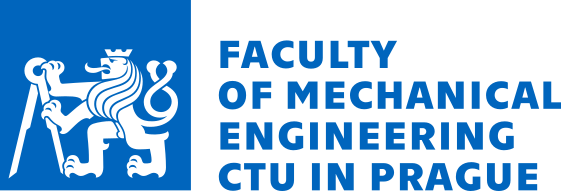User: unknown || Login || NEWS: Recordings, Evaluation, Photos, Lectures available, Leaflet
WCFA'22-VFA
Programme of the Workshop
The course is built in such a way, that no prior knowledge on fatigue analysis is needed. The basic principles of the common fatigue damage estimation are described in the first day, while the lectures on vibration fatigue analysis follow in next two days. In order to better suit the needs of participants and to fit the course to the level of their knowledge, several variants of the course are provided as shown in the table below.
| Monday November 14, 2022 |
M. Růžička, J. Papuga, M. Nesládek: Introduction to Fatigue | V1 | V3 |
| Tuesday November 15, 2022 |
J. Slavič: Signal Processing
D. Benasciutti: Uniaxial Vibration Fatigue Analysis | V2 | |
| Wednesday November 16, 2022 |
F. Cianetti & M. Palmieri: Introduction to Dynamic Analysis
A. Nieslony: Multiaxial Vibration Fatigue Analysis |
Topics discussed in individual days follow.
Introduction to Fatigue
This part is covered in variants: Introduction to Fatigue (V1), Complete Course (V3).
| Monday, November 14, 2022 | ||
| 8:00-8:50 | Registration | |
| 8:50-9:00 | Jan Papuga | Welcome info |
| 9:00-10:30 | Milan Růžička | Basics in Fatigue Fatigue Curves Materials Considerations Loading Considerations Statistical Aspects |
| 10:30-11:00 | Coffee break | |
| 11:00-12:30 | Jan Papuga | Fatigue Life Estimates Stress-Life Based Fatigue Estimate Factors Affecting Fatigue Life Strain-Life Based Fatigue An example of the workflow |
| 12:30-13:30 | Lunch | |
| 13:30-15:00 | Martin Nesládek | Fracture Mechanics FM Approach Stress Intensity Factor Fatigue Crack Growth An example of the workflow |
| 15:00-15:30 | Coffee break | |
| 15:30-17:30 | Jan Papuga | Advanced Topics Fatigue in Welds Multiaxial Fatigue Available Software Applications & Data Sources FAtigue BEnchmark Repository And Why It Should Matter |
Vibration Fatigue Analysis, Part 1
This part is included in all variants except of Introduction to Fatigue (V1).
| Tuesday, November 15, 2022 | ||
| 8:00-8:50 | Registration | |
| 8:50-9:00 | Jan Papuga | Welcome info |
| 9:00-10:30 | Janko Slavič | Signal Processing, Part 1 Classifying Time Signals and PSD’s Statistics, probability and reliability Loads & “Cross PSD’s” Gaussian, random and stationary data Zero and peak crossing rates Irregularity factor Root mean square (RMS) value Moments |
| 10:30-11:00 | Coffee break | |
| 11:00-12:30 | Janko Slavič | Signal Processing, Part 2 System Transfer Functions (Frequency Domain) Choosing points on the transfer function How transfer functions work FFT’s and PSD’s Buffers and window averaging Calculating PSD’s From Time Signals Hand calculations from a PSD Case Study Homework |
| 12:30-14:00 | Lunch | |
| 14:00-15:30 | Denis Benasciutti | Uniaxial Vibration Fatigue Analysis, Part 1 Analysis of variable amplitude loadings (cycle counting, damage accumulation, critical damage,...). Example. Extension to random loadings: amplitude probability distribution, expected damage, fatigue life. Example. Switching to frequency domain: random processes, different analysis levels (from amplitude distribution to damage) Recaps of PSD concepts (spectral moments, bandwidth parameters). Types of PSD (narrow band, wide band, bimodal) and relationship with cycle distribution damage. |
| 15:30-16:00 | Coffee break | |
| 16:00-17:30 | Denis Benasciutti | Uniaxial Vibration Fatigue Analysis, Part 2 Overview of spectral methods - for narrowband and wideband case (narrow band, Wirsching & Light, Dirlik, Steinberg, Tovo-Benasciutti, α0.75-method) - and bimodal case (single-moment, Jiao-Moan, Fu-Cebon) Comparison of methods: numerical and experimental results Calculation example from PSD data Special cases: Non-Gaussian and non-stationary loadings Final notes and recommendations |
| 19:00-22:00(?) | Informal social meeting | |
Vibration Fatigue Analysis, Part 2
This part is included in all variants except of Introduction to Fatigue (V1).
| Wednesday, November 16, 2022 | ||
| 8:00-9:30 | Filippo Cianetti | Introduction to Dynamic Analysis Undamped and damped free-response Harmonic and general forcing excitation Frequency response function Base excitation Homework |
| 9:30-10:00 | Coffee break | |
| 10:00-11:30 | Massimiliano Palmieri | Dynamic Analysis of Randomly Excited Systems Dynamic analysis by FE Dynamic analysis by modal approach How to obtain strain/stress PSD responses and spectral moments Case Study Homework |
| 11:30-12:30 | Lunch | |
| 12:30-14:00 | Adam Niesłony | Multiaxial Vibration Fatigue Analysis, Part 1 Understanding multiaxial load and multiaxial stress state Description of the spatial stress state Relation between stress state components, non-proportionality General concept of frequency domain fatigue life assessment in multiaxial stress state |
| 14:00-14:30 | Coffee break | |
| 14:30-16:00 | Adam Niesłony | Multiaxial Vibration Fatigue Analysis, Part 2 Multiaxial fatigue failure criteria: - von Mises stress and its evaluation in frequency domain - critical plane concept criteria Case Study Homework |
| 16:00-16:10 | Jan Papuga | Closing the workshop |
Timetables of past volumes
- WCFA'19 & PHL
- WCFA'18 & FKM
- WCFA'17 & DFW
- WCFA'16 & VFA
- WCFA'13 & PUM05
- WCFA'11 & PUM04
- WCFA'09 & PUM03
- WCFA'08 & PUM02
papuga@pragtic.com, last update: December 29, 2022
EXTERN LINKS:



















